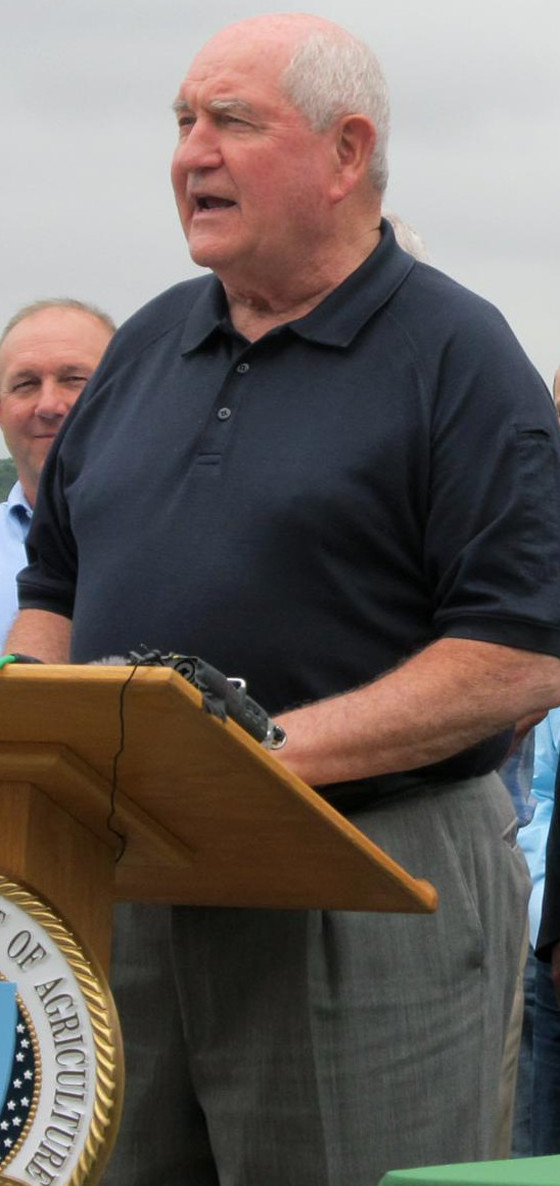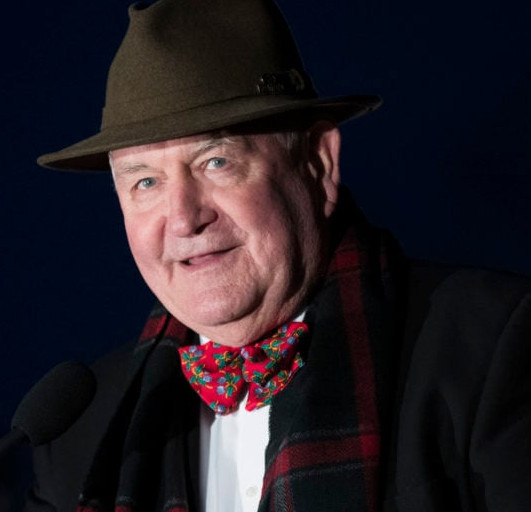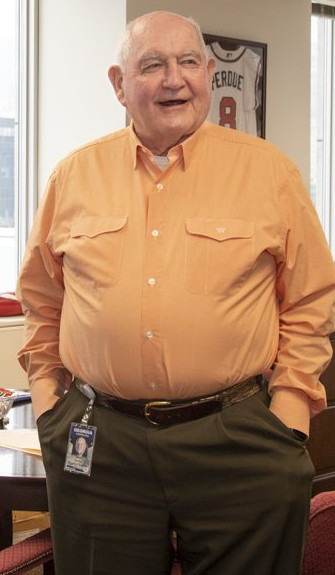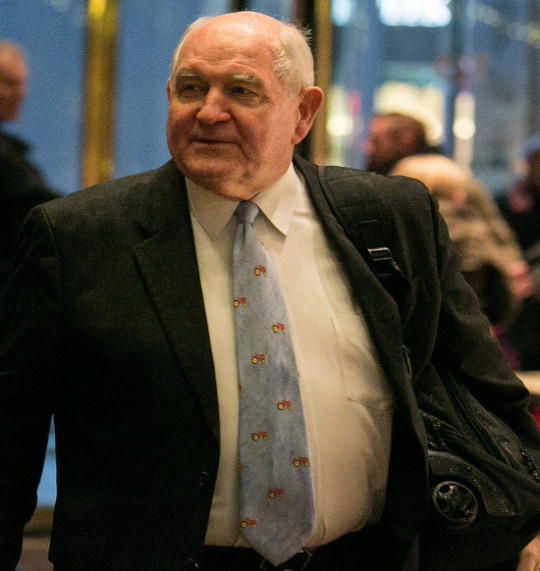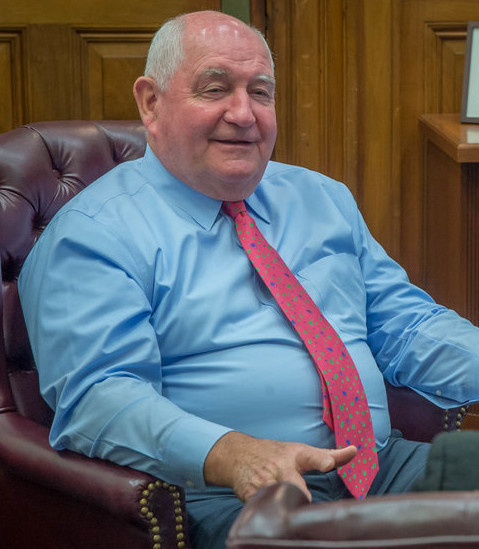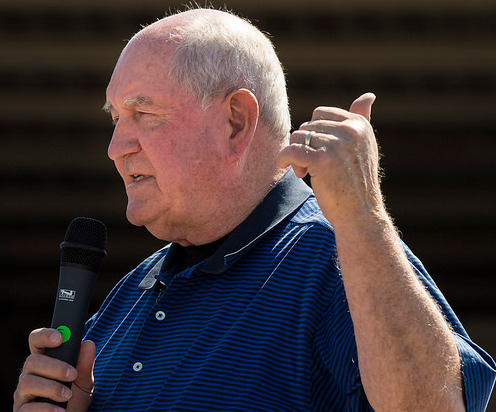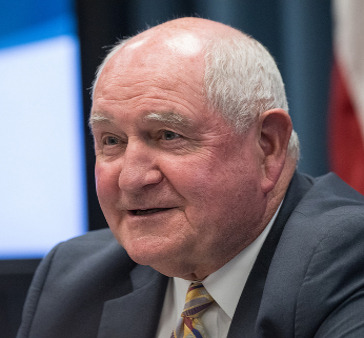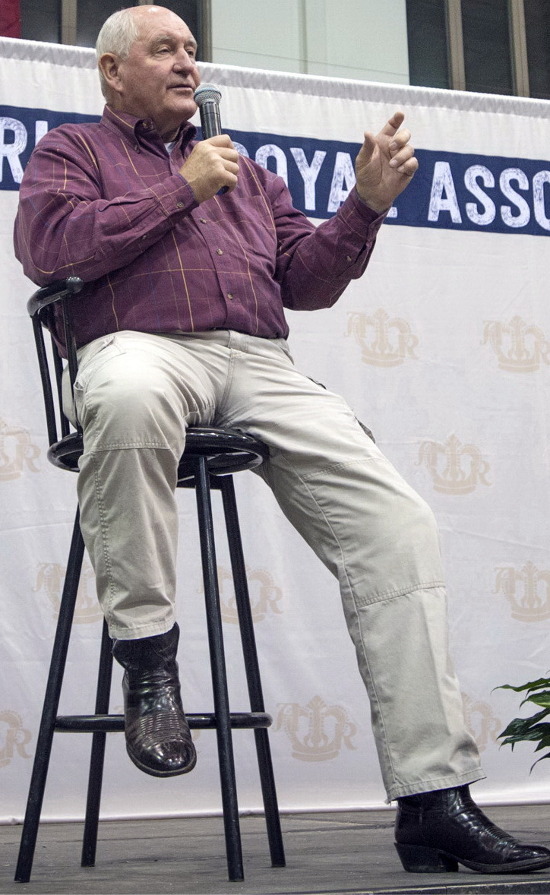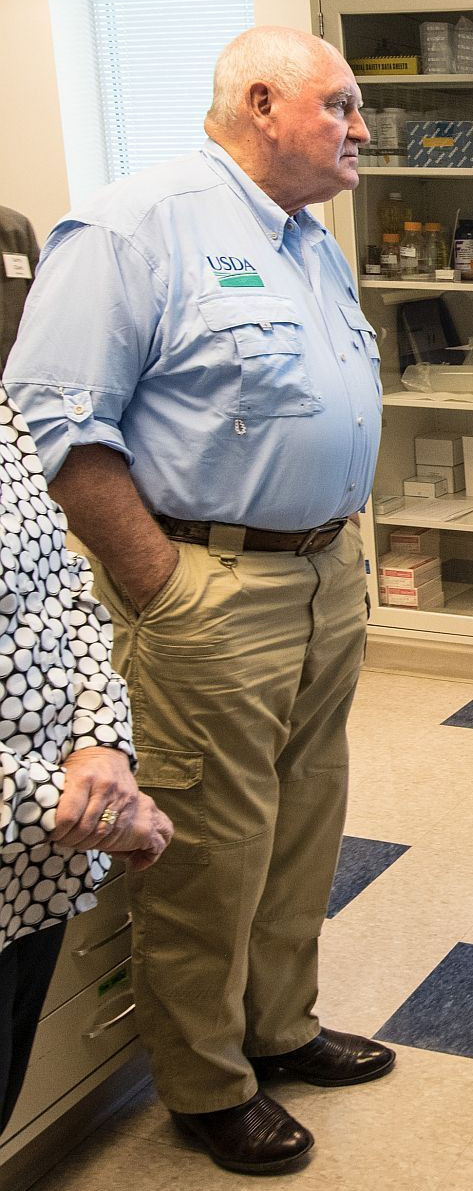#sonny perdue
Explore tagged Tumblr posts
Text




I was hoping for a return of Sonny Perdue as AG Secretary, but of the 15 possible people in the running for the next Secretary of Agriculture. I'm rooting for either Texas Ag Commissioner Sid Miller, Current House Ag Chairman Rep. Glenn Thompson or Zippy Duvall. But my favorite of the three is GT.
99 notes
·
View notes
Text
Chancellor Perdue

Featuring the 14th Chancellor of the University System of Georgia, Sonny Perdue
Last year, I was working part-time at the University System of Georgia headquarters in Atlanta. That's where I came to know Chancellor of the University System of Georgia, Sonny Perdue. The former US secretary of agriculture and Georgia governor asked me to be his aide in the fall of 2024. It was then I would find myself admiring his stocky 5’9”, 77-year-old figure, eventually dreaming about him and waking up with a hard-on. And to make matters worse or better, I suspected he might be interested. But I would resolve to not convey any gay vibe to encourage him.
That fall, I accompanied Sonny on a weekend fundraising-and-recruiting trip to Houston, where I flew on a private jet with him and attended a dinner with donors. Since I was there stag, I just hung by the bar when everyone else was mingling, including Sonny and I got pretty tipsy that night. So much so that I found myself in Sonny’s hotel room, where the two of us were hitting the mini bar. The lights were dim, Sonny had removed his jacket and tie, and he’d ordered porn on the television. In the movie, two young guys were banging a chubby, middle-aged woman.
He had just excused himself to the bathroom. I expected the old man to shut the door when he entered the bathroom, but he didn't. He just walked up to the toilet and unzipped his pants. When I realized I hadn’t heard him pee, I looked over briefly and was surprised to see him stroking a thick, 8 inch uncut cock. I admit I started to get pretty hard and because of that, I stared too long, and he noticed. I looked up to see Sonny looking right at me, smiling.
"You are gay aren't you?" He asked, breaking the awkward silence.
"Yea." I answered without even thinking.
"Thought so." The old man said as he stood there shaking his dick back and forth as it swelled up. "You want to suck it?"
Giving in to lustful temptation was the only thing I was good at. I walked over to him and kissed him, wanting to do that for so long. Quickly, Sonny started unbuttoning my shirt, unzipping my pants, and basically tearing my clothes off as he moved his tongue around inside my mouth. I fell onto my knees in front of Sonny and with his full 8" cut old man cock pointing in my face, I stuck out my tongue and flicked the head of his prick. My tongue slid down the side of his cock and back up again, licking him with vigour as I felt my cock flutter uncomfortably in my pants. I reached down and unzipped them, allowing my prick to fall out and leak precum onto the carpeted floor.
Holding his cock at the base, I went back to his balls, sucking and licking as I started jacking his fat cock like hell. I looked up to see his shirt undone all the way. He had each of his nipples between his fingers, twisting and rubbing them while I pounded his cock. His head was tilted back and his eyes were closed as he hunched toward me.
I looked up to see his shirt undone all the way. He had each of his nipples between his fingers, twisting and rubbing them while I pounded his cock. His head was tilted back and his eyes were closed as he hunched toward me. I grabbed the base of his cock and wrapped my lips around it, my tongue thrust against the shaft as I swallowed half of his dick.
"Oh yes…" Sonny moaned as I felt his big hand grab my head and press it down. I looked up, my mouth full of juicy cock, he was looking down at me and smiling.
I began bobbing my head up and down his shaft as his nuts bounced invitingly against my chin. I reached up and tugged at his nuts, they were sweaty, my fingers curled around them and he moaned with satisfaction. I pulled away from his cock and put a hand on his thigh, rubbing him while I jerked my cock, he let go of my head and wrapped his hand around his wet cock, stroking generously. I stood up and pulled my pants off, throwing them onto the floor.
Sonny reached down and took my cock in his other hand, pressing my throbbing cock against his own, his fist wrapped around them both. I gasped as I felt my cock press against his wet prick. He grabbed the back of my neck and pulled my face down. I licked his chest, moving my hands down to his butt cheeks and I squeezed them while gliding my tongue over to his hard nipples. I felt his hand grip tighter around our kissing cocks while my tongue swirled around his nipple as I sucked them eagerly, first the right then the left as my hand massaged his butt cheeks.
Suddenly Sonny pulled his hand away from around our cocks, laid down on the bed and began by stroking his dick. I followed him eagerly, and knelt down beside it, pressed my tongue against his thigh and licked my way up to his nuts. My tongue lapped at his nuts while he lay there stroking himself.
"Ride me." He whispered, looking like he was all ready to cum and everything.
As I stood up and looked around for some lube, Sonny told me he had some Vaseline in his bag in the corner. I walked over towards it and bent over to pull the Vaseline out, as I bent over I felt him grab my legs. Looking back from under my legs, I saw Sonny kneeling behind me, his cockhead resting on the floor, leaving a wet mark on the carpet.
I let out a sharp gasp as I felt his tongue slide down my crack.
I held on to the wall as my legs began to shake as his tongue slid up and down my sweaty crack until it pressed against my hole.
"Oh yeah." I moaned as he slid the tip of his tongue into me, tonguefucking me, eating my ass.
Sonny did that for around five minutes till I knew my hole must have been dripping, then he stood up and took the Vaseline tub from me. My cock was twitching and I wanted to touch it, but I knew if I did, I'd shoot as I watched him rub the Vaseline over his prick while heading back to the bed. As he laid back, spreading his legs wide, I climbed onto the bed and lifted one leg to the other side, hovering over his crotch, his 8" pole. As I lowered myself onto his cock, I felt the head against my hole and he immediately thrust all 8 inches into me.
I gasped loudly, so loudly in fact that I’m sure the people in the next room heard.
Placing both my hands on his chest, I dug into it as I lifted my ass and slid back down again. Sonny let me take control, so I rode his dick, stopping whenever I thought he was getting close to coming so we could kiss.
After teasing him and prolonging the excitement, Sonny was desperate to cum. Just then, this white haired older man took charge and flipped me over. Sonny had grabbed my feet and held me wide open for a hard pounding. The bed springs creaked loudly as the sound of his body slapping against my young skin. My cock bounced around and leaked like a faucet onto my belly. Sweat dripped off Sonny and covered my hot body. The room was steaming and filled with the sounds of Sonny's balls slamming against my ass, my cries of being fucked, and his groans of approval.
10 minutes later of ass pounding ecstasy, I knew I was going to cum and told Sonny so. He slowed his thrusts and began stroking my cock slowly. I couldn't take it and fired my load onto my belly. It wasn't big, but I had a good pool of sperm all over my belly. After squeezing the last drop out of me, Sonny resumed his assault on my ass and fucked me till I was dizzy.
I could tell from the look on Sonny's face that I was about to get a big load up my ass. He suddenly bellowed like a bull and dropped his cum deposit deep in my ass. He must have shot 10 or 12 huge spurts of cum in my ass. Now for a man in his late seventies, that was impressive. And as Sonny pulled out, I heard his cock make a wet pop as it left my popped cherry before he fell beside me, breathing like he'd just ran the marathon.
We slept very well that night.

76 notes
·
View notes
Text
Sonny Perdue
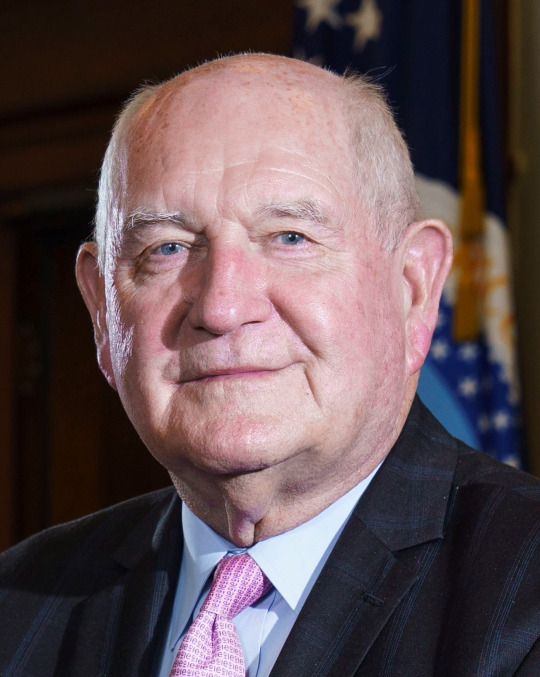
Physique: Husky/Average Build Height: 5′ 10″ (1.78 m)
George Ervin "Sonny" Perdue III (born December 20, 1946-) is an American politician who served as the 31st United States secretary of agriculture from 2017 to 2021. A member of the Republican Party, he previously served as the 81st governor of Georgia from 2003 to 2011 and as a member of the Georgia State Senate from 1991 to 2002. On March 1, 2022, the Board of Regents of University System of Georgia appointed Perdue as the system's 14th chancellor, effective April 1, 2022.

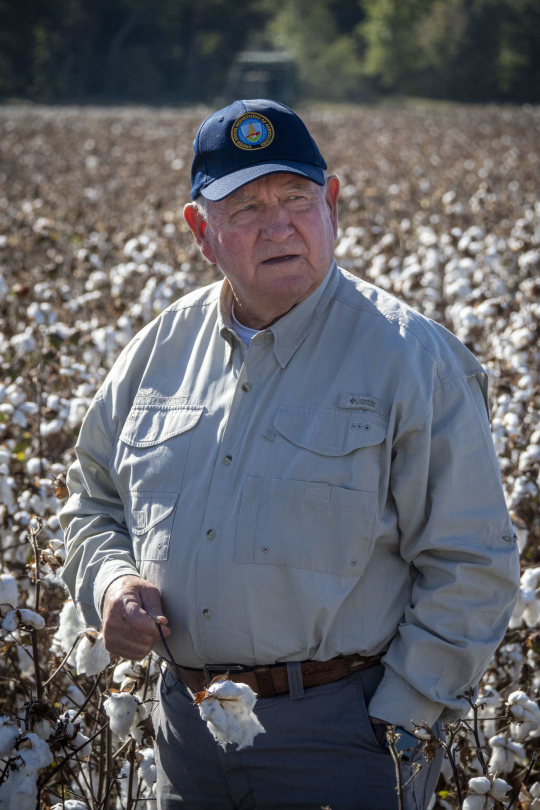
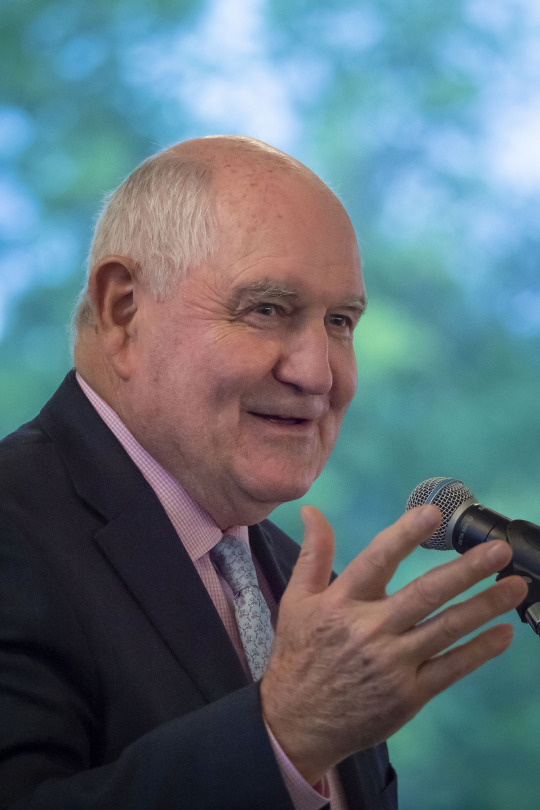
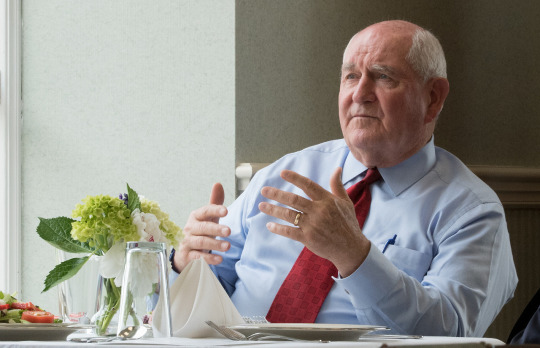
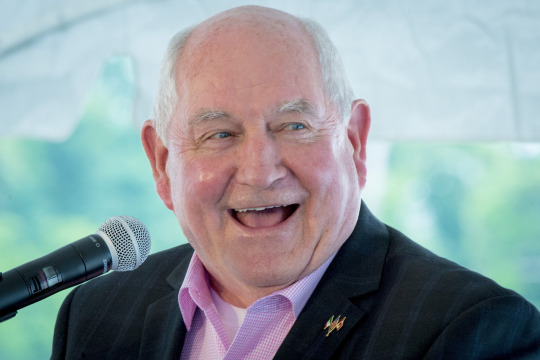
Handsome, husky vigorous and personable with a Ed Asner/Noble Willingham look to him. And what pushes him from 'attractive' to downright 'sexy' is that he wears 'fucking boots.' I know they're not called 'fucking boots' but I call them that because I'd fuck anybody while they're wearing cowboy boots. I know, I'm a whore like that. Say what you want about President Donald Trump, when it comes to hot as men. He knows how to pick them.
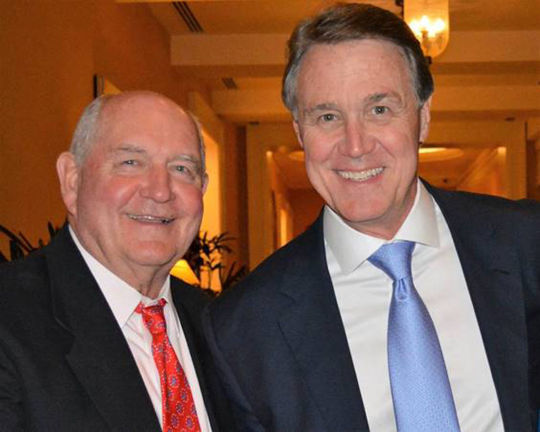

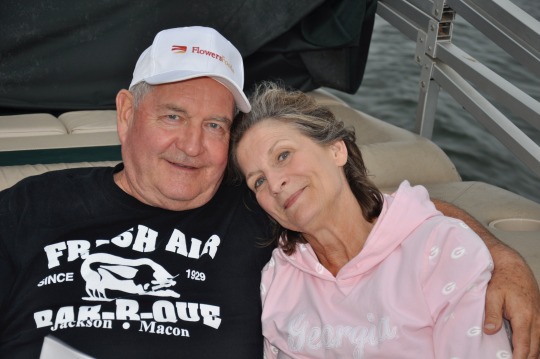
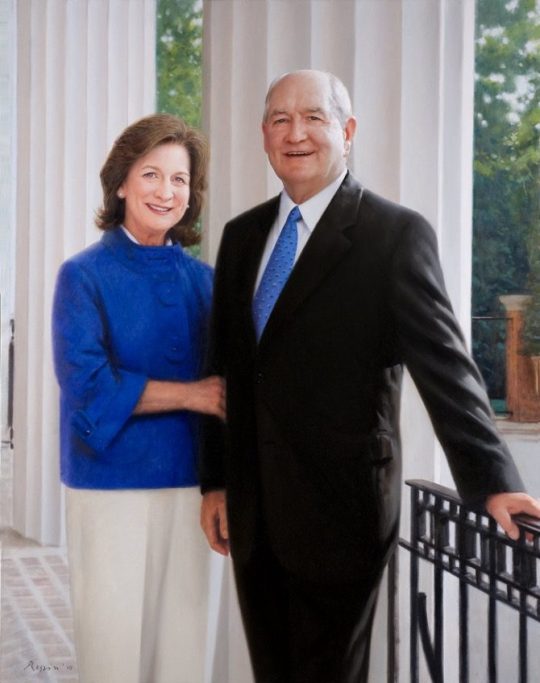

Lets see… he has been married since 1972 with four children, fourteen grandchildren and have also been foster parents for many children. On a side note, his son Dan Perdue could definitely get a taste too. He also the cousin of David 'Big Dick' Perdue. An avid sportsman, Sonny enjoys flying and, in a 2003 incident, was accused of flying a state helicopter without a license. Sounds like a bit of a bad boy. And everybody loves a bad boy.
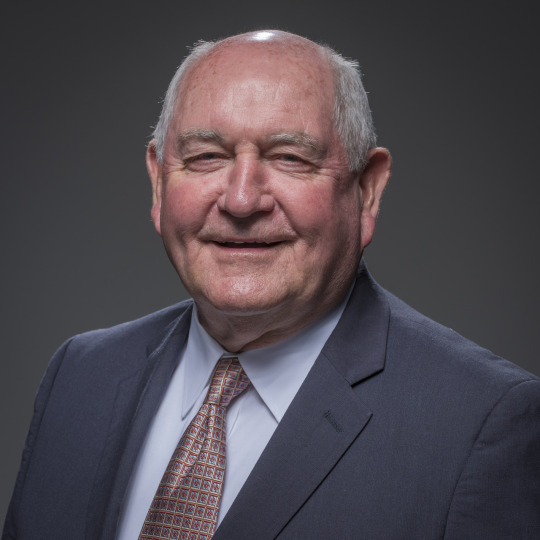
113 notes
·
View notes
Text
Georgia Governor DILFs

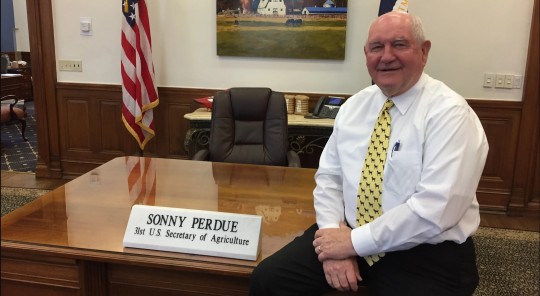
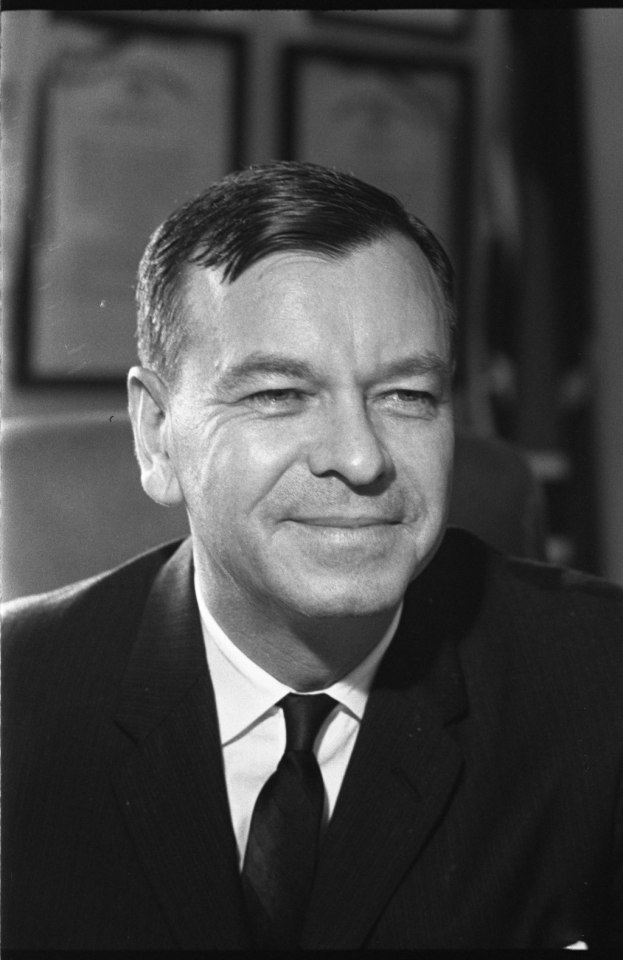
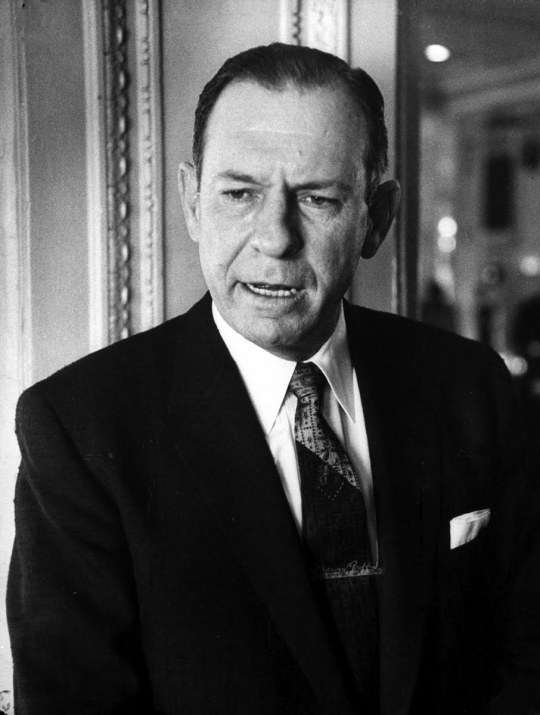




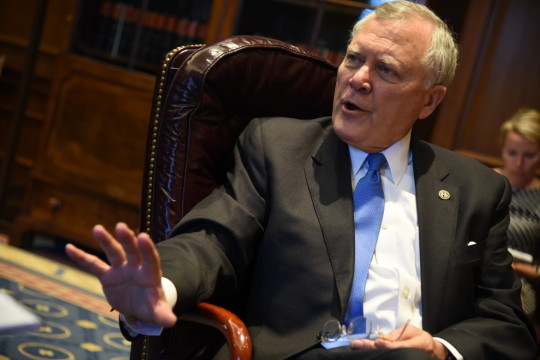
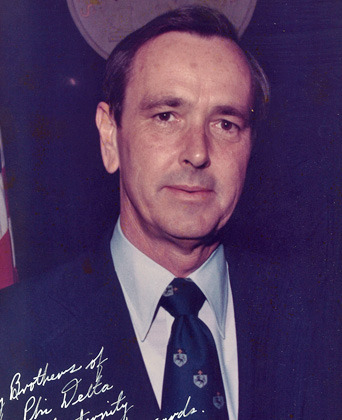
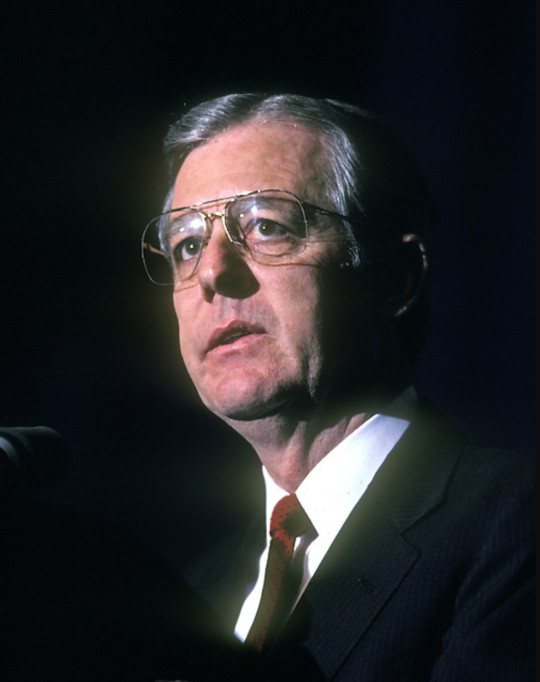



Jimmy Carter, Sonny Perdue, Herman Talmadge, Marvin Griffin, Ernest Vandiver, Carl Sanders, Melvin E. Thompson, Lester Maddox, Nathan Deal, George Busbee, Joe Frank Harris, Roy Barnes, Zell Miller, Brian Kemp
#Jimmy Carter#Sonny Perdue#Herman Talmadge#Marvin Griffin#Ernest Vandiver#Carl Sanders#Melvin E. Thompson#Lester Maddox#Nathan Deal#George Busbee#Joe Frank Harris#Roy Barnes#Zell Miller#Brian Kemp#GovernorDILFs
42 notes
·
View notes
Text
HARTFORD, Conn. (AP) — Before his arrest Wednesday, Paul Steed was a respected sugar market expert for a subsidiary of famed candymaker Mars Inc. He served on a U.S. trade advisory committee for sweeteners as well as on industry group boards, while giving presentations at conferences.
Now Steed, of Stamford, Connecticut, is accused in a federal indictment of stealing more than $28 million from Mars since about 2013 through various schemes, including diverting funds to companies he set up. He is charged with seven counts of wire fraud and two counts of tax evasion.
Steed, 58, a dual U.S. and Argentine citizen, pleaded not guilty in federal court in Bridgeport on Wednesday and was ordered detained pending trial. A U.S. magistrate judge said Steed was a flight risk and noted that while the government has seized $18 million of the allegedly pilfered funds, several million dollars remain unaccounted for and Steed has strong connections to family in Argentina.
Steed’s lawyer, federal public defender Phoebe Bodurtha, did not immediately respond to an email seeking comment Thursday.
His wife, Martina Steed, told The Associated Press in a brief phone call that she did not know all the facts of the case and declined further comment.
Mars Inc. said in a statement that the case involves “the action of a single individual who sought to exploit the organization for personal gain.”
“We fully cooperated with law enforcement to see this matter quickly brought to justice and always remain committed to maintaining the highest ethical standards and integrity in all our operations,” it added.
Steed worked remotely from his Stamford home as global price risk manager for Mars Wrigley, according to federal prosecutors. The company is a subsidiary of McLean, Virginia-based Mars Inc., the maker of M&M’s, Snickers, Skittles, Altoids mints and Doublemint gum, as well as other food products and pet food.
Steed and his wife appeared to be living beyond their means, according to the judge’s order authorizing his pretrial detention.
Steed’s annual salary was about $200,000 while his wife was making $40,000 to $50,000 a year as a hair stylist, Magistrate Judge S. Dave Vatti said in the order. Yet they paid $2.5 million in cash in 2023 for a property in wealthy Greenwich, Connecticut, and own a mortgage-free home in Stamford worth $1 million, he wrote.
Steed also sent $2 million over the past several years to relatives, other people and entities in Argentina, where he apparently owns a cattle and tea ranch, according to the order.
In July 2012 he set up a company, Ibera LLC, and a year later he began submitting false invoices from it to Mars, according to the federal indictment. The scheme allegedly went on until December 2020, with Steed stealing nearly $580,000 with the bogus invoices.
A bigger scheme beginning in 2016 would result in the diversion of millions of dollars from Mars through another Steed-created company, MCNA LLC, the indictment said. Prosecutors say Steed told certain sugar refineries who were buying “re-export credits” from Mars to send the money to MCNA instead.
Steed also used MCNA in other scams including one involving the theft of more than $11 million from the sale of Mars’s shares in a financial services company, according to the indictment.
Steed was appointed in early 2021 by then-U.S. Agriculture Secretary Sonny Perdue and U.S. Trade Representative Robert Lighthizer to serve on an agricultural trade advisory committee for sweeteners and sweetener products.
In a LinkedIn posting previewing a commodities conference in New York City last year, Steed was listed as serving in several sugar industry groups, including being a former president of the New York Sugar Club. He also was a member of the Intercontinental Exchange's Sugar Contract Committee and a board member of the U.S. Sugar Users Association.
6 notes
·
View notes
Text
Cabinet Endorsements
One thing that's flown a bit below the radar in this election is that former cabinet members haven't been acting like they usually do. Normally, former cabinet members will automatically endorse their former boss for re-election, but Trump's have not been doing that.
This is of particular interest because, while we, the voters, get to see the President give speeches and the like, we don't actually work with him. Presumably a cabinet member is someone who agrees with the president and who the president trusts and who gets to work closely with the president, so their opinion of the president is an important benchmark.
With that in mind, let's take a look at the 44 former cabinet members of the Donald J. Trump administration and the 2 former cabinet members of the Joseph R. Biden administration. I'll put an (E) next to the ones that have endorsed their former boss, an (H) next to the ones who haven't yet, and an (R) next to the ones who have outright refused to do so.
Cabinet Members of the Donald J. Trump Administration (R) VP Mike Pence (H) Sec. State Rex Tillerson (H) Sec. State/CIA Director Mike Pompeo (E) Sec. Treasury Steven Mnuchin (R) Sec. Defense James Mattis (H) Sec. Defense Patrick Shanahan (nominated) (R) Sec. Defense Mark Esper (H) Sec. Defense Christopher Miller (acting) (H) AG Jeff Sessions (R) AG William Barr (H) AG Jeffrey Rosen (acting) (E) Sec. Interior Ryan Zinke (H) Sec. Interior David Bernhardt (H) Sec. Agriculture Sonny Perdue (E) Sec. Commerce Wilbur Ross (H) Sec. Labor Andrew Puzder (nominated) (H) Sec. Labor Alex Acosta (H) Sec. Labor Eugene Scalia (H) Sec. HHS Tom Price (H) Sec. HHS Alex Azar (H) Sec. HHS Pete Gaynor (E) Sec. HUD Ben Carson (H) Sec. Transporation Elaine Chao (H) Sec. Transportation Steven Bradbury (acting) (H) Sec. Energy Rick Perry (H) Sec. Energy Dan Brouillette (H) Sec. Education Besty DeVos (H) Sec. Education Mick Zais (acting) (H) Sec. VA David Shulkin (E) Sec. VA Ronny Jackson (nominated) (H) Sec. VA Robert Wilkie (R) Sec. HS John Kelly (H) Sec. HS Kirstjen Nielsen (H) Sec. HS Chad Wolf (nominated) (E) US Trade Rep. Robert Lighthizer (H) DNI Dan Coats (H) DNI John Ratcliffe (H) UN Ambassador Nikki Haley (H) OMB Directory Mick Mulvaney (E) OMB Director Russel Vought (H) CIA Director Gina Haspel (H) EPA Admin. Scott Pruitt (H) EPA Admin. Andrew Wheeler (H) SBA Admin. Linda McMahon (H) SBA Admin. Jovita Caranza
Cabinet Members of the Joseph R. Biden Administration (E) Sec. Labor Marty Walsh (E) OMB Director Neera Tanden (nominated) (H) Office of Science and Tech. Director Eric Lander
The first thing we notice, obviously, is that there are a whole lot more former Trump cabinet members. This is partially because Biden is still in office so his 23 current cabinet members are not counted (it'd be a huge surprise if they didn't endorse him and they probably wouldn't still be working for him if they didn't), but it's also because Trump had way above average turnover for cabinet officials, 19 in the first four years not including the 5 who resigned due to his handling of the 2020 election results (not included because Biden hasn't reached that point in his first term yet), while Biden has had far below average turnover, only 3 so far.
So a lot more people shuffling in and out of the Trump administration, but we also notice a ton more H's than E's there. Heck, there's almost as many R's among Trump's people as there are E's (5 to 7). Meanwhile, Biden's shooting 2 for 3 and the third one hasn't (at least not that I could find) ruled out endorsing him.
Keep in mind, endorsing the nominee of your party is pretty much the bare minimum that any party operative needs to do. Imagine if you applied for a job somewhere, the first question was "do you think this company should be in business", and you answered "no". You probably wouldn't be getting a job there. In other words, refusing to endorse has some big consequences for the people doing it, not just costing them a job in the potential next Republican presidency, but locking them out of the party entirely, and yet a good deal of the people who worked for Trump disliked working with him so much that they're doing it anyways.
As I said, this tends to fly below the radar because it's kind of a formulaic ritual; of course members of the President's party who are closely tied to him are going to endorse him for re-election! That's why you should pay attention now that most of the people who've worked with Trump aren't doing so. It says something, something big.
16 notes
·
View notes
Text
LÉGENDES DU JAZZ
RICHARD DAVIS, LE CONTREBASSISTE QUI DANSAIT AVEC LES ÉTOILES
‘’He found freedom in the bass by pivoting between the earth and the stars.”
- Jason Moran
Né le 15 avril 1930 à Chicago, dans les Illinois, Richard Davis a grandi dans le South Side. Sa mère ayant perdu la vie en lui donnant naissance, Davis avait été adopté par Robert et Elmora Johnson. Davis avait amorcé sa carrière musicale aux côtés de ses frères, en jouant de la contrebasse dans le trio vocal familial qui était dirigé par un de ses cousins. Davis s’était rapidement familiarisé avec le jazz grâce à l’impressionnante collection de 78-tours de sa mère qu’il écoutait sans arrêt.
Mais malgré son intérêt pour la musique, ce n’est pas avant l’âge de quinze ans que Davis avait ressenti le besoin de fixer son choix sur un instrument en particulier. Davis étant plutôt timide et introverti, il n’était pas vraiment attiré par des instruments de premier plan comme le saxophone ou la trompette. À l’âge de quinze ans, Davis avait finalement fixé son choix sur la contrebasse, un instrument qui l’avait toujours fasciné. Davis expliquait: “I was just enthralled by the sound. The bass was always in the background and I was a shy kid. So I thought maybe I’d like to be in the background.”
Au DuSable High School, Davis avait étudié sous la direction du légendaire capitaine Walter Dyett. Très sévère, Dyett avait dirigé le Eighth Regiment Infantry Band dans la Illinois National Guard, ce qui en avait fait un farouche partisan de la discipline. Même s’il était très strict, Davis avait été très influencé par Dyett, qu’il avait décrit comme “the kind of teacher you dream about.” Même s’il avait formé de grands noms du jazz comme Nat King Cole et Dinah Washington, Dyett avait incité Davis à ne pas se limiter au jazz et à s’intéresser à tous les styles de musique. À Chicago, Davis avait également eu comme mentors les contrebassistes Wilbur Ware et Eddie Calhoun.
Au DuSable High School, Davis avait eu comme camarades de classe le futur saxophoniste Clifford Jordan et le futur chanteur de blues Bo Diddley (alors connu sous le nom d’Ellas McDaniel). Comme contrebassiste, Davis avait été particulièrement influencé par Oscar Pettiford, Jimmie Blanton, Slam Stewart et Milt Hinton.
Parallèlement à ses études, Davis avait été membre du Chicago Youth Symphony Orchestra (connu à l’époque sous le nom de Youth Orchestra of Greater Chicago). Davis avait d’ailleurs participé au premier concert de l’orchestre à l’Orchestra Hall de Chicago le 14 novembre 1947.
Après avoir décroché son diplôme du high school, Davis s’était inscrit à la VanderCook School of Music, où il avait éventuellement obtenu un baccalauréat en éducation musicale.
Parallèlement à ses études, Davis avait appris son métier ‘’sur le tas’’ en se produisant dans les clubs et les bars de Chicago. C’est d’ailleurs en jouant dans les clubs que Davis s’était lié d’amitié et avait commencé à travailler avec le pianiste Sonny Blount, qui se ferait bientôt connaître sous le nom de Sun Ra. Lors de leur premier rencontre, Blount avait dit à Davis: “I’m not gonna take you to the moon because you’re not ready yet.” Cette déclaration avait ouvert les yeux de Davis, qui n’avait pas tardé à découvrir que Blount était un mystique qui entretenait une vision très spirituelle de la musique. Blount avait d’ailleurs eu une influence déterminante sur l’évolution ultérieure de Davis. Ne délaissant pas pour autant ses études, Davis avait poursuivi son apprentissage de la contrebasse avec Rudolf Fahsbender du Chicago Symphony Orchestra.
DÉBUTS DE CARRIERE
En 1952, Davis s’était joint au trio du pianiste Ahmad Jamal, avec qui il avait joué durant deux ans. Après s’être lié d’amitié avec le pianiste Don Shirley, Davis s’était installé à New York en 1954. Il avait d’ailleurs enregistré avec Shirley un album en duo intitulé Tonal Expressions. Davis avait fait équipe avec Shirley jusqu’en 1956, lorsqu’il s’était joint au Sauter-Finegan Orchestra.
Au début, Davis avait trouvé la ville de New York plutôt intimidante. Il expliquait: “There was so much talent, and I was always feeling that a bass player who was already established in New York would see me carrying a bass and say, ���Where you going, boy?’” Mais en dépit de ses craintes, Davis n’avait pas tardé à conquérir le Big Apple. Son habileté de contrebassiste et la facilité avec laquelle il pouvait lire la musique l’avaient rendu très populaire comme accompagnateur.
Très en demande dans les années 1960, Davis avait travaillé avec plusieurs petits groupes de l’époque, dont ceux d’Eric Dolphy, Jaki Byard, Booker Ervin, Andrew Hill, Elvin Jones et Cal Tjader. Il avait aussi collaboré à l’enregistrement de plusieurs albums-phares du jazz, dont Out to Lunch d’Eric Dolphy, Black Fire et Point of Departure d’Andrew Hill, Dialogue de Bobby Hutcherson, In ‘N Out de Joe Henderson, Essence de John Lewis, Let My Children Hear Music de Charles Mingus, A Night At The Vanguard de Kenny Burrell, Life Time de Tony Williams, The Song Book de Booker Ervin et Rip Rig and Panic de Rahsaan Roland Kirk.
Après un bref séjour avec le Sauter-Finegan Orchestra, sur la recommandation du batteur Roy Haynes, Davis s’était joint en 1957 à la section rythmique de la chanteuse Sarah Vaughan, avec qui il avait enregistré quatre albums (dont Swingin’ Easy, qui comprenait le classique “Shulie A Bop’’) et voyagé en tournée jusqu’en 1960. Davis, qui avait énormément apprécié son séjour avec la chanteuse, avait déclaré au cours d’une entrevue qu’il avait accordée en 2014:
“You could say I went to the University of Sarah Vaughan. She was so musically skilled. And playing with her brought me to play with her accompanist Jimmy Jones, whose knowledge of chords was phenomenal. Sarah was so musical she could improvise beautifully along with the changes he would play. And the great percussionist Roy Haynes was in that band too, and he had such an amazing concept of rhythm… Once you’ve proven yourself with musicians at that level, other vocalists start to call you, because they figure you must know something.”
Davis avait été particulièrement redevable à Vaughan de l’avoir aidé à améliorer son jeu à l’archet. Il expliquait: “Some of the first bass players used the bow to play the walking bass line. And I heard all of that coming up as a kid. Therefore, when you start to study books of bass methods, you start out with the bow no matter what your intentions are, so there must be some intertwining of what I heard as a kid, what I heard working with Sarah Vaughan, wanting to imitate those vocal sounds.”
Mais après avoir joué durant trois ans avec Vaughan, Davis avait ressenti le besoin de relever de nouveaux défis. C’est alors que Davis avait été contacté par Eric Dolphy, qui était alors l’étoile montante du jazz d’avant-garde. Davis raconte comment Dolphy l’avait approché: “He said, ‘What are you doing next week?’ I said, ‘Nothing.’ And he said, ‘Why don’t you go down to the Five Spot with me?’” Passionné par la musique classique contemporaine, Davis n’avait pas tardé à se lier d’amitié avec Dolphy, un multi-instrumentiste qui excellait tant au saxophone alto qu’à la clarinette basse et à la flûte.
Après s’être joint au groupe de Dolphy, Davis s’était immédiatement senti attiré par le free jazz (ou ‘’New Thing’’, comme certains l’appelaient à l’époque). Comme Davis l’avait expliqué au cours d’une entrevue accordée en 2001: “Limiting yourself to a particular set of notes and chords is in a sense being a slave to the powers that be. We were resisting being imprisoned by chord changes, trying to free ourselves from the restrictions of scales and rhythms. Some people call this free music. Some of us called it our music. Unrestricted, indefinable, and free.”
Davis avait enregistré deux albums avec Dolphy: Iron Man (1963) et Out To Lunch! (1964), un album qui est aujourd’hui considéré comme un classique du jazz d’avant-garde. Dolphy, qui ne tarissait pas d’éloges pour l’originalité de Davis, écrivait dans les notes de pochette de l’album: “Richard doesn’t play the usual bass patterns. He plays rhythm with his lines. He leads you somewhere else.”
En plus des deux albums déjà cités, on peut entendre Davis sur les albums live de Dolphy enregistrés au club Five Spot, ainsi que sur différentes sessions publiées après la mort tragique de ce dernier en 1964. Un coffret publié récemment sous le titre de Musical Prophet: The Expanded 1963 New York Studio Sessions comprend un enregistrement de la pièce “Iron Man”, une pièce que Dolphy avait composée en l’honneur de Davis. Le coffret inclut également des pièces que Dolphy et Davis avaient enregistrées en duo, dont le classique ‘’Come Sunday’’ de Duke Ellington. Au cours de cette période, Davis avait également travaillé avec d’autres musiciens d’avant-garde comme le vibraphoniste Bobby Hutcherson, le batteur Tony Williams, et surtout le pianiste Andrew Hill, avec qui il avait enregistré sept albums de 1963 à 1969, dont le classique Point Of Departure (1964).
En 1966, Davis avait été un des membres fondateurs du Thad Jones/Mel Lewis Orchestra, dont il avait fait partie jusqu’en 1972 et qui se produisait tous les lundis soirs au légendaire Village Vanguard de New York.
Commentant le travail de Davis sur la pièce “Three and One’’ que Jones avait arrangée spécialement pour mettre en valeur les talents du contrebassiste, le chef d’orchestre et compositeur Darcy James Argue avait précisé: “Davis plays the nimble melody along with the horns, before dropping into steady, buoyant walking lines to drive the sax soli and horn solos. Then, Davis solos with gestural abstraction, like a Jackson Pollock action painting come alive.” Au cours de cette période, Davis avait également joué avec Don Sebesky, Oliver Nelson, Frank Sinatra, Miles Davis, Johnny Hodges, Dexter Gordon, Joe Henderson et Ahmad Jamal.
Mais le jazz ne nourrissant pas toujours très bien son homme, Davis avait été contraint d’accepter certains contrats ‘’alimentaires’’ afin de pouvoir assurer sa subsistance. Il avait même conçu des jingles publicitaires et travaillé sur des dizaines de projets ‘’mainstream’’, enregistrant notamment avec la chanteuse de R & B Ruth Brown et le percussionniste de jazz latin Willie Bobo. Il avait également enregistré avec plusieurs musiciens pop et rock. Davis avait notamment fait des apparitions sur les albums Smile de Laura Nyro, Watertown de Frank Sinatra, Something So Right de Paul Simon, Astral Weeks de Van Morrison, Greetings From Asbury Park, N.J. et Born to Run de Bruce Springsteen et At Seventeen de Janis Ian.
Le succès que Davis avait remporté avec l’album Astral Weeks lui avait d’ailleurs apporté d’autres contrats avec des artistes comme Rickie Lee Jones, Bonnie Raitt, Judy Collins, Buffalo Springfield, Carly Simon et Barbra Streisand. Commentant l’enregistrement de l’album, Davis avait précisé: “Some people are real disillusioned when I tell them about making the record. People say, ‘[Morrison] must have talked to you about the record and created the magic feeling that had to be there….’ To tell you the truth, I don’t remember any conversations with him. He pretty much kept to himself. He didn’t make any suggestions about what to play, how to play, how to stylize what we were doing.” De son côté, le producteur Lewis Merenstein avait déclaré: “[F]or me, it was Richard all the way. Richard was the soul of the album.” Quant au critique Griel Marcus du magazine Rolling Stone, il avait qualifié le travail de Davis de ‘’greatest bass ever heard on a rock album.”
En 1967, Davis était devenu un artiste de premier plan en enregistrant Heavy Sounds, une collaboration avec l’ancien batteur de John Coltrane, Elvin Jones. L’album avait permis à Davis de déployer toute l’étendue de sa virtuosité, notamment dans le cadre d’une remarquable version du standard “Summertime’’ de George Gerswhin. Mais il avait fallu attendre encore deux ans pour que Davis enregistre un premier album comme leader, Muses For Richard Davis, une session de jazz post-bop enregistrée pour l’étiquette allemande MPS. Mais s’il avait fallu du temps à Davis pour enregistrer un premier album sous son nom, il s’était bien repris depuis et avait gravé trente albums comme leader ou comme co-leader de 1967 à 2007.
À la fin des années 1960 et au cours des années 1970, Davis avait également été membre du New York Bass Violin Choir. Dirigé par le contrebassiste Bill Lee (le père du réalisateur Spike Lee), le groupe comprenait également d’autres virtuoses de cet instrument comme Ron Carter, Milt Hinton et Sam Jones.
Durant sa carrière, Davis avait aussi joué de la musique classique avec des chefs d’orchestre de renommée mondiale comme Igor Stravinsky (qui le considérait comme son contrebassiste préféré), Leonard Bernstein, George Szell, Pierre Boulez, Leopold Stokowski et Gunther Schuller. Davis, qui détestait les étiquettes, avait commenté ainsi son habileté à se produire dans différents types de musique: “Duke Ellington always said there’s no difference between jazz and classical. He didn’t classify any genres. To him, there were only two kinds of music: It’s either good or bad. I’m with Duke Ellington on that.”
DERNIERES ANNÉES
Après avoir vécu à New York durant vingt-trois ans, Davis était déménagé au Wisconsin en 1977 pour devenir professeur à l’Université de Wisconsin–Madison, où il avait enseigné la contrebasse, l’histoire du jazz et l’improvisation durant plus de quarante ans. Parmi ses étudiants, on remarquait William Parker, David Ephross, Sandor Ostlund, Hans Sturm, Alex Kalfayan, Ryan Maxwell et Karl E. H. Seigfried. Davis explique comment il avait été approché pour enseigner à Madison: “I got a call offering me a job at the university in Madison because they didn’t have a bass teacher on campus.’’ Davis n’ayant jamais entendu parler de cette université, il avait interrogé son entourage pour savoir où l’université se trouvait. Il précisait: “I asked around if anyone had heard of the place because this school kept calling me. Martin Luther King, Jr. talked about the importance of teaching others, and I had always wanted to teach young people. I thought maybe it was time.”
En raison de son travail d’enseignant, Davis avait dû réduire sensiblement le nombre de ses sessions d’enregistrement et de tournées. À l’instar de son mentor Walter Dyett, Davis avait rapidement acquis la réputation d’être un professeur très sévère qui accordait également d’importance à la discipline. Il expliquait: “I teach character. That’s the most important thing for me — follow-through and hard work. The world is not waiting on you, and there’s tons of talent out there.” Décrivant sa passion pour l’enseignement, Davis avait précisé: “I love teaching. I believe you should share what you have.” Le premier étudiant diplômé de Davis, Peter Dominguez, avait commenté ses débuts dans l’enseignement de la façon suivante: “He came from New York and he had that heavy New York accent – and it was hard to understand him – but he’d always do this thing where he’d grab your bass, anything that you were playing, and he would immediately tear it up. I mean, he would just play it flawlessly and he’d hand it back to you. He’d always say, ‘Yeah, and I don’t even know your bass.’ And you’d just go, ‘Oh…’ How do you respond to that? But it really taught me that I had to get down to business.”
Parallèlement à son travail de professeur, Davis s’était également distingué pour son implication sociale, notamment en participant à la création d’institutions combattant le racisme. L’engagement de Davis dans la lutte contre le racisme était directement lié à la discrimination qu’il avait vécue lors de ses tentatives visant à s’établir comme musicien classique. Davis expliquait:
“My environment with race issues started the day I was born. You’re born with dark skin, and that itself brings on attitudes of other people who are not dark-skinned to see you as someone to be oppressed and not to be given equal chances in society. So that is something that is permanent [...]. I was 18 years old and I could play any and all of the European classical music, but you weren’t allowed to participate in the symphony orchestra because there were racial issues and prejudices. They didn’t want to see you.”
En 2000, Davis avait fondé le chapitre local de l’Institute for the Healing of Racism, un organisme dont il avait été le président et qui avait pour but de favoriser l’harmonie interraciale par l’entremise d’échanges entre les différentes communautés culturelles.
Comme Davis l’avait expliqué au cours d’une entrevue qu’il avait accordée en 2010: “One of the big problems here is racism — racial profiling, racism, from other students towards black students and teachers and administrators alike. And I couldn't live with myself if I would not intervene and do something, and that’s what I’ve got. I had a daughter of 28, and I was setting a role model for her to do something.” En 1998, Davis avait également fondé le Retention Action Project (RAP) afin d’améliorer le taux de graduation des étudiants de couleur. Au cours des années, le R.A.P. avait réussi à faire venir à l’université les plus grands conférenciers et activistes, dont Peggy McIntosh, Jane Elliott, Francie Kendall, Nathan Rutstein, Victor Lewis, Hugh Vasquez et Allan G. Johnson. Davis avait aussi animé des ateliers. Un de ses ateliers avait pour titre ‘’Racial Conditioning: The Oneness of Humankind.’’
Davis avait aussi encouragé une plus grande diversité parmi le corps enseignant, qui était composé à 97% de professeurs blancs au moment où il s’était joint à l’université en 1977. Très intéressé par le développement de la relève, Davis avait également co-fondé en 1993 avec son ancien étudiant Peter Dominguez la Richard Davis Foundation for Young Bassists. La fondation attirait annuellement une centaine de jeunes musiciens de trois à dix-huit ans. Très impliqué dans la promotion de la justice sociale, Davis était toujours prêt à partager sa vision, sa résidence et ses ressources de façon à créer un environnement permettant à chacun de vivre dans la paix et la dignité. Davis avait également fondé à Madison un chapitre de l’Institute for the Healing of Racism, Inc. Davis a pris sa retraite de l’enseignement en 2016, même s’il avait continué d’être impliqué dans sa fondation.
En 1986, Davis s’était produit au légendaire club Sweet Basil de Greenwich Village avec un groupe qui comprenait le batteur Freddie Waits. Dans son compte rendu du concert, le critique Robert Palmer du New York Times avait commenté: “The relaxed, slightly behind-the-beat swing typical of so many jazz rhythm sections is not for them. Their accents fall right up on top of the beat, and they vary their springy forward momentum with rhythmic whirlpools and rapids and an explosive sense of dynamics.” À la fin des années 1980, Davis avait également fait partie des membres fondateurs du groupe New York Unit, un trio qui comprenait le pianiste John Hicks et le batteur Tatsuya Nakamura. Le trio avait enregistré huit albums pour des compagnies japonaises jusqu’en 1998.
En mai 2000, Davis avait publié un CD intitulé The Bassists: Homage to Diversity. Enregistré au Japon, l’album avait pour but d’exprimer l’unicité de l’humanité.
En 2016, Davis s’était rendu à Paris, en France, afin de participer à un hommage à John Coltrane avec Archie Shepp. Faisant le bilan de sa carrière en 2019, Davis s’était dit satisfait du travail accompli. Il avait précisé: “I’ve done some great things. I’ve had some phenomenal associations with some great composers, conductors, colleagues and the whole bit.”
Richard Davis est mort le 6 septembre 2023 à Madison, au Wisconsin, à l’âge de quatre-vingt-treize ans. Très malade, Davis avait été hospitalisé durant deux ans dans une maison spécialisée pour personnes âgées. Les causes exactes de sa mort n’avaient pas été précisées. Davis laissait dans le deuil une fille, Persia. Au moment de sa mort, Davis travaillait sur la rédaction de son autobiographie. C’est sa fille Persia qui avait annoncé le décès de Davis dans un communiqué. Remerciant la communauté de Madison de son soutien, Persia avait commenté: “We appreciate all the love and support the community has shown him over the years.’’ Persia, qui avait créé une page web en hommage à son père, avait ajouté: ‘’Richard touched the lives of thousands and will be missed by friends, family, fans, students, and colleagues around the world.”
À la demande de Davis, il n’y avait eu aucun mémorial ni funérailles publiques. L’animateur de jazz Chuck France avait rendu hommage à Davis le 20 septembre sur les ondes de la station de radio WORT.
Rendant hommage à Davis après sa mort, le pianiste Ethan Iverson avait déclaré: “The room became much larger when Richard Davis unpacked his instrument.” Un autre collaborateur de Davis, le pianiste Jason Moran, avait salué “the way he found the space in the bass line. Instead of ‘walking’ a bass line, Davis seems to ‘chart’ it. Like an astronomer charting the sky.’’ Moran avait ajouté: “In that way, he found freedom in the bass by pivoting between the earth and the stars.” Le dernier album de Davis, un enregistrement en duo avec le pianiste Junior Mance, était intitulé Blue Monk. L’album avait été publié exclusivement au Japon en 2009.
Lauréat de nombreux prix, Davis a été élu ‘’Jazz Master’’ par la National Endowment for the Arts en 2014. Davis a également remporté un Hilldale Award pour souligner son travail d’enseignant. Le prix lui avait été remis par l’ancienne chancelière de l’Université Madison, Donna Shalala. En 2000, le Club Rotary de Madison avait aussi décerné à Davis un Manfred E. Swarsensky Humanitarian Award. L’année suivante, le gouverneur de l’État du Wisconsin lui avait attribué le Governor’s of Wisconsin Arts Award. En 2003, Davis avait également remporté le Reverend Dr. Martin Luther King, Jr. Humanitarian Award. Décerné annuellement par la Cité de Madison, le prix lui avait été remis par la mairesse Susan J.M. Bauman dans le cadre du 18e anniversaire de la mort de King. En 2008, Davis s’était également vu attribuer un prix MAMA (Madison Area Music Award Michael St. John Lifetime Achievement Award). L’année suivante, l’Université de Madison avait attribué à Davis un Exceptional Service Award. La même année, la Wisconsin Historical Society lui avait décerné un Spencer Tracy Award for Distinction in the Performing Arts.
Davis est également récipiendaire de plusieurs doctorats honorifiques, dont un du Edgewood College de Madison, en 1998. En 2018, la Cité de Madison a aussi renommé une rue en son honneur. Davis avait également remporté le titre de meilleur contrebassiste dans le cadre de sept sondages consécutifs des critiques du magazine Down Beat de 1967 à 1974. Quant au magazine Rolling Stone, il avait classé Davis au 34e rang des 50 plus grands bassistes de tous les temps.
Davis a collaboré à plus de six cents albums au cours de sa carrière, en plus d’en diriger une douzaine comme leader, dont le classique Heavy Sounds, enregistré avec le batteur Elvin Jones en 1967. Davis a travaillé avec de nombreuses sommités du jazz au cours de sa carrière, dont Eric Dolphy, Sonny Stitt, Oliver Nelson, Ahmad Jamal, Sarah Vaughan, Miles Davis, Charles Mingus, Johnny Hodges, Dexter Gordon, Joe Henderson, Milt Hinton, Bobby Hutcherson, John Hicks, Tony Williams, John Lewis, Jaki Byard, Kenny Burrell, Ron Carter, Jason Moran, Roy Haynes, Booker Ervin, Louis Armstrong, Dizzy Gillespie, Pharoah Sanders, Archie Shepp, Andrew Hill, Elvin Jones et Cal Tjader. Davis s’est également produit dans les plus grandes salles à travers le monde, que ce soit au Japon, en Europe, en Russie, en Amérique du Sud, en Europe, à Hong Kong ou en Israël.
Commentant la polyvalence de Davis comme musicien, le contrebassiste et professeur Rufus Reid lui avait rendu hommage en ces termes: “Richard has played in every musical setting you could imagine. Whether it be performing in a symphonic orchestra, recording jingles, recording jazz records, and then playing until dawn in a club in the bowels of The Village in New York… and he might be doing all of that in one day.” Saluant la contribution de Davis au monde du jazz et à la lutte contre le racisme, le directeur éditorial de WISC-TV, Neil Heinen, écrivait dans le magazine Spectrum:
“As one of the world’s premier bass players, Davis’s music has touched the lives of countless fans, and his teaching has inspired generations of students in the classroom as well as with the Richard Davis Foundation for Young Bassists, Inc., which provides musical instruction for financially challenged youth. While the jazz master and professor could’ve ended his renowned biography there, his passion for social justice, for the healing of racism, has changed the lives of those who have accepted his invitation to open their hearts, minds and spirits to the history and pathology of racism within.”
Le contrebassiste William Parker, qui avait étudié avec Davis au cours de sa jeunesse à New York, ne tarissait pas non plus d’éloges au sujet du talent de son collègue. Parker avait déclaré: “Richard Davis was a beautiful musician and human being. He reminded me of an African king, regal and strong. I praise him not because he could play both classical and jazz. I applaud him because the brother had a big, poetic sound full of freedom.” Décrivant Davis comme un musicien et professeur très exigeant qui incitait ses collaborateurs à élever la qualité de leur jeu et à toujours donner le meilleur d’eux-mêmes, le batteur Victor DeLorenzo avait précisé: “And, I’ll never forget, Richard was talking with me one time and he said, ‘Victor, I’m glad that you’re a part of this group, but I have to ask you…what is it that you do?’ He was referring to me playing on stage because I was playing with brushes and it was kind of quiet – what I was doing – and he couldn’t really hear me. Because there was another drummer and another percussionist featured in the group. So, he was honestly asking, ‘What is it that you do?'”
De l’avis de DeLorenzo, si Davis était un aussi grand musicien, c’était parce qu’il cherchait constamment à apprendre et à s’améliorer. DeLorenzo avait ajouté: “He was a gifted musician in that he was a very studied musician and had a great knowledge of the jazz idiom. But also, he was known and respected as a musician that could play with any other musician. He just had that wide-open kind of a personality.”
En plus de sa carrière de musicien et de son travail de professeur, Davis était également un grand passionné d’équitation. Davis avait commencé à s’intéresser aux chevaux à l’âge de neuf ans lorsqu’il avait obtenu un travail à temps partiel dans une écurie de Chicago aux côtés de son camarade de classe Bo Diddley. Davis avait même participé à un concours de dressage.
©- 2025, tous droits réservés, Les Productions de l’Imaginaire historique
SOURCES:
FORDHAM, John. ‘’US jazz bassist who worked with Van Morrison and Sarah Vaughan and later became a professor of bass at Wisconsin University.’’ The Guardian, 27 septembre 2023.
HENKIN, Andrey. ‘’Richard Davis, Gifted Bassist Who Crossed Genres, Dies at 93.’’ New York Times, 11 septembre 2023.
‘’Richard Davis.’’ Wikipedia, 2024.
2 notes
·
View notes
Text


Sonny Perdue Former Governor of Georgia
32 notes
·
View notes
Note
Would you rather bottom for Jon Tester or top him? Same question for all these studs too, if you have the time. If you have any new pics of them that would be great!
Tim Walz
RFK
Ralph Gooddale
Rex Tillerson
Jerry Dyer
Glenn Thompson
Sonny Purdue

Jon Tester - I occasionally dream of topping Jon, but most, if not all the time he's topping me.

Tim Walz - I bottom him. I don't see him as a top. In some other reality, maybe.

RFK - He's topping me all the way. Unless I see some pics of his ass and it looks bangable.

Ralph Gooddale - I'm topping him.

Rex Tillerson - I see Sex Tillerson a topping me.

Jerry Dyer - I can see him topping me.

Glenn Thompson - Top all the way.

Sonny Perdue - I could go either way with Sonny.
26 notes
·
View notes
Text

Sonny Perdue
#suitdaddy#suiteddaddy#suit and tie#suited daddy#men in suits#silverfox#suited grandpa#suitfetish#suit butt#suit ass#suited butt#suited ass#suitedman#buisness suit#suitedmen#americans#republicans#secretary of agriculture#trump administration#Sonny Perdue
135 notes
·
View notes
Text
Rex Tillerson

Physique: Average Build Height: 5’ 10" (1.80 m)
Rex Wayne Tillerson (born March 23, 1952) is an American energy executive who served as the 69th United States secretary of state from 2017 to 2018 in the administration of Donald Trump. From 2006 to 2016, he was chairman and chief executive officer (CEO) of ExxonMobil.
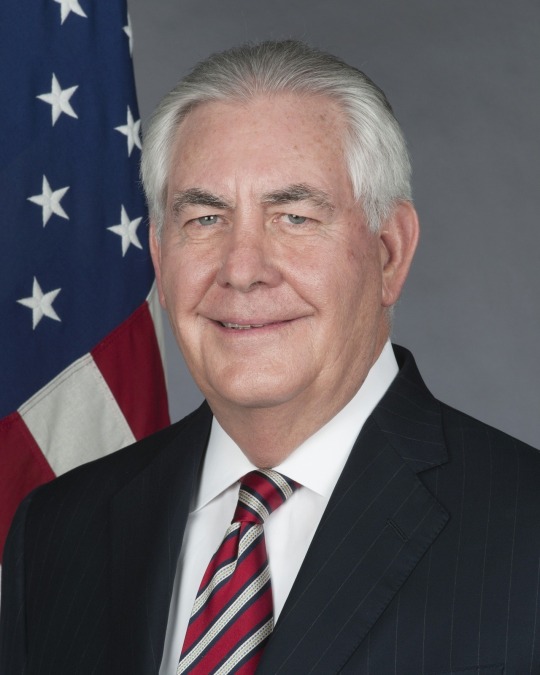




Say what you want about Donald Trump, he sure knows how to pick good looking men. A good ol’ boy from Texas, T-Rex seems like a guy who as long as he gets his, he doesn't care who he bust his nut with. Well, he would probably disagree, but if a story comes out that he had hot sex with twinks in the past. I'd not be surprised. Plus, he's rich bitch! I'm not saying that's a reason to date him. Just a nice side benefit.

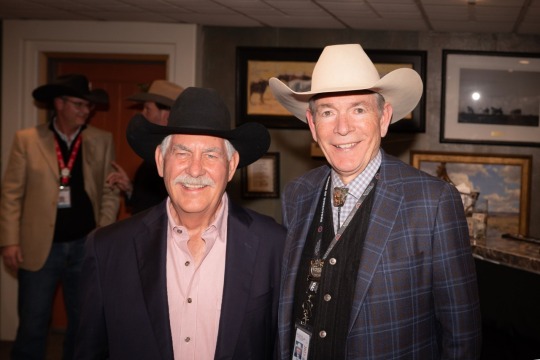



Tillerson has been married twice with twin sons from his previous marriage and one son with his current wife. A Boy Scout who worked his way up to the CEO of ExxonMobil and later became president of the Boy Scouts of America. Mr. Tillerson was all set for retirement when President Trump tapped him up to be the most fuckable member of his administration Well… maybe him and Sonny Perdue.

160 notes
·
View notes
Text
Desangran ?a Zeta Gas
Tal parece que antes de que termine el año Grupo Zeta Gas tomará otro derrotero. Y es que doña Evangelina López Guzmán retomará el control del grupo gasero después de pelear por años sus derechos en las cortes de Estados Unidos y México. Desde 2015 el juez de la corte estadounidense en Texas, Roy L. Moore, dictó sentencia al proceso de divorcio y entregó la propiedad de la mayor parte de empresas que opera Zeta Gas a doña Evangelina, y hace ya varios meses que la Suprema Corte de Justicia de México confirmó la posición de la corte estadounidense y resolvió el caso en el mismo sentido. Por desgracia, la justicia en México es lenta y habría colusión entre autoridades judiciales y funcionarios, ya que hasta el momento quienes mantienen ilegalmente el control de las empresas son Miguel Zaragoza Fuentes y Elsa Esther Carrillo Anchondo, a quien se le relaciona sentimentalmente. En particular el SAT, al mando de Osvaldo Santín, ha dejado pasar una serie de irregularidades en el manejo de las empresas, que tienen que ver con la recaudación fiscal, al hacerse de la vista gorda en transferencias multimillonarias de cuentas personales a empresas del grupo y del grupo a personas físicas, entre las que se encuentran las de Carrillo Anchondo y sus hijos Manuel y Enrique Ituarte Carrillo. Hay transacciones desde Bahamas por casi 33 millones de dólares a Corporación Río Bravo e Inmobiliaria III, ambas empresas filiales o ligadas a Grupo Zeta. Existen además operaciones extrañas que el SAT, la Comisión Nacional Bancaria y de Valores, de Bernardo González, ni Hacienda, de José Antonio González Anaya, revisan y dejan pasar en un acto que parece colusión con Zaragoza Fuentes, como el de la cuenta número 2990307262 de BBVA Bancomer a nombre de Elsa Esther Carrillo Anchondo, y en la cuenta 0111057634 a nombre de Inmobiliaria, que involucran casi 100 millones de pesos. LA RUTA DEL DINERO Un alza de 8.7 por ciento de utilidad en comparación a la del mismo periodo del año pasado registró Crédito Real de Ángel Romanos, en su reporte a junio a la BMV, es decir 459 mdp. La firma tiene una cartera de casi 34 mil millones de pesos a través de sus 5 principales productos: nómina, Pymes, microcréditos, consumo y autos usados. Este último tiene una especial apuesta toda vez que fusionaron sus líneas de negocio en EU para operar bajo la marca Crédito Real USA, en donde desde hace 4 años tienen presencia en 32 estados, cartera de 110 millones de dólares y 9 mil clientes… El secretario de Sagarpa, Baltazar Hinojosa Ochoa, esta en Buenos Aires, Argentina, en la Reunión de Ministros de Agricultura del G20, cuyos trabajos están enfocados a fortalecer la cooperación científica y técnica para una agricultura sustentable y competitiva. En el marco del foro sostendrá reuniones con sus homólogos de Argentina, Luis Miguel Etchevehere; de Canadá, Lawrence MacAulay; de España, Luis Planas Puchades, y de EU, Sonny Perdue, así como con el comisionado de Agricultura de la Unión Europea, Phil Hogan.

0 notes
Text
Seriously, it's more than double Benghazi in this one article. I want to stop posting these.
0 notes
Photo
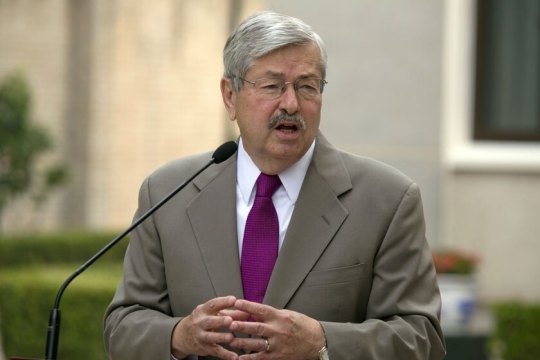



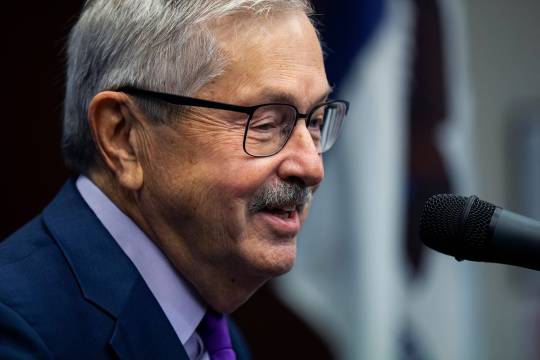

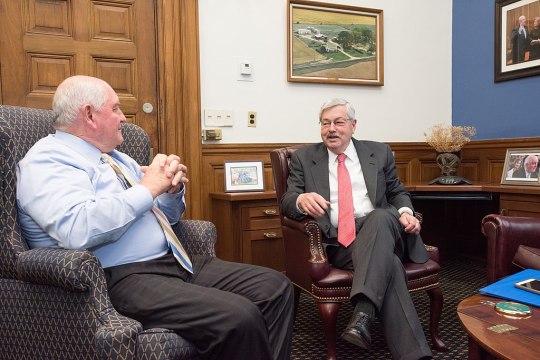
Terry Branstad (and Sonny Perdue!)
41 notes
·
View notes
